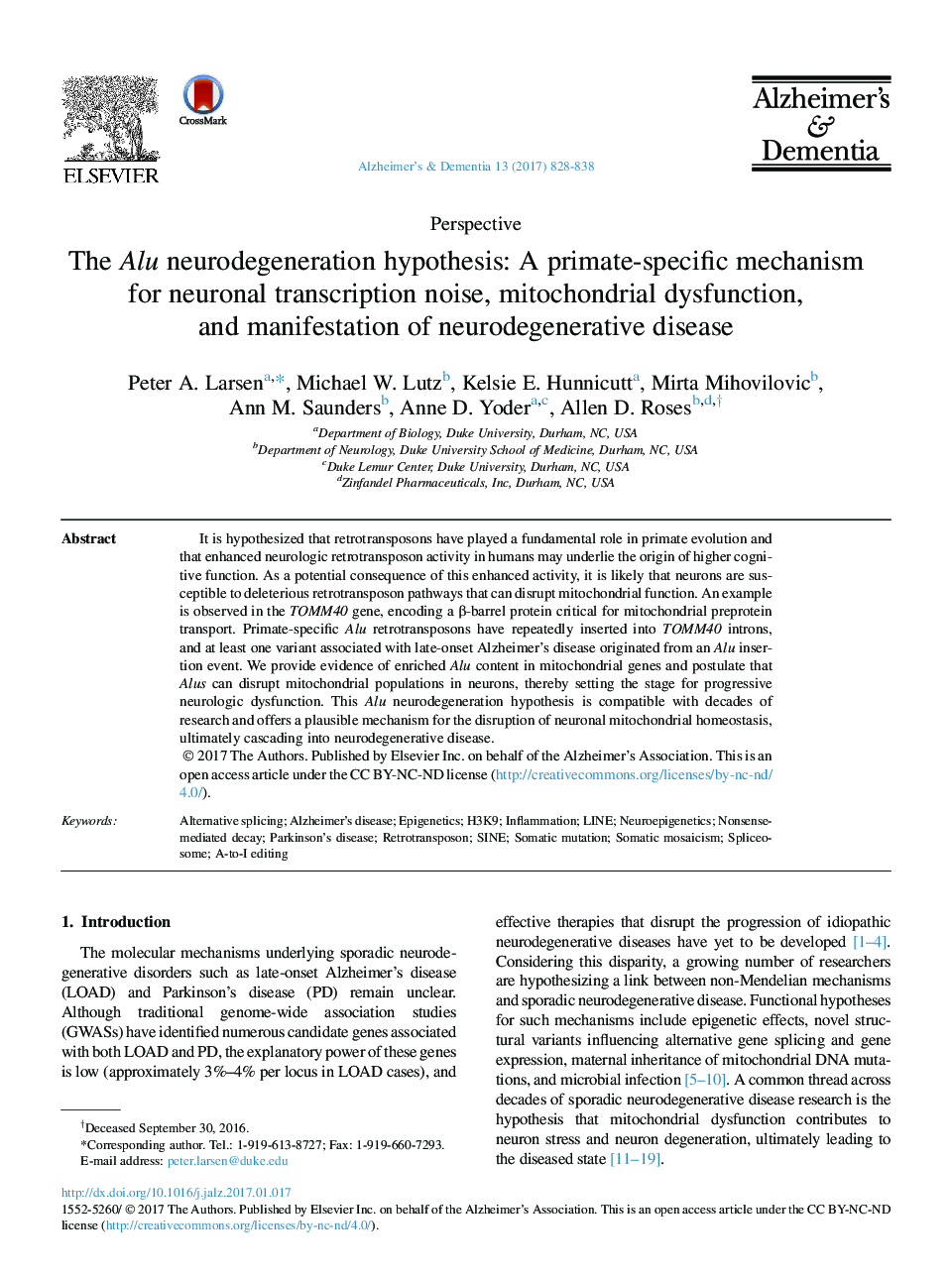| Article ID | Journal | Published Year | Pages | File Type |
|---|---|---|---|---|
| 5623653 | Alzheimer's & Dementia | 2017 | 11 Pages |
It is hypothesized that retrotransposons have played a fundamental role in primate evolution and that enhanced neurologic retrotransposon activity in humans may underlie the origin of higher cognitive function. As a potential consequence of this enhanced activity, it is likely that neurons are susceptible to deleterious retrotransposon pathways that can disrupt mitochondrial function. An example is observed in the TOMM40 gene, encoding a β-barrel protein critical for mitochondrial preprotein transport. Primate-specific Alu retrotransposons have repeatedly inserted into TOMM40 introns, and at least one variant associated with late-onset Alzheimer's disease originated from an Alu insertion event. We provide evidence of enriched Alu content in mitochondrial genes and postulate that Alus can disrupt mitochondrial populations in neurons, thereby setting the stage for progressive neurologic dysfunction. This Alu neurodegeneration hypothesis is compatible with decades of research and offers a plausible mechanism for the disruption of neuronal mitochondrial homeostasis, ultimately cascading into neurodegenerative disease.
